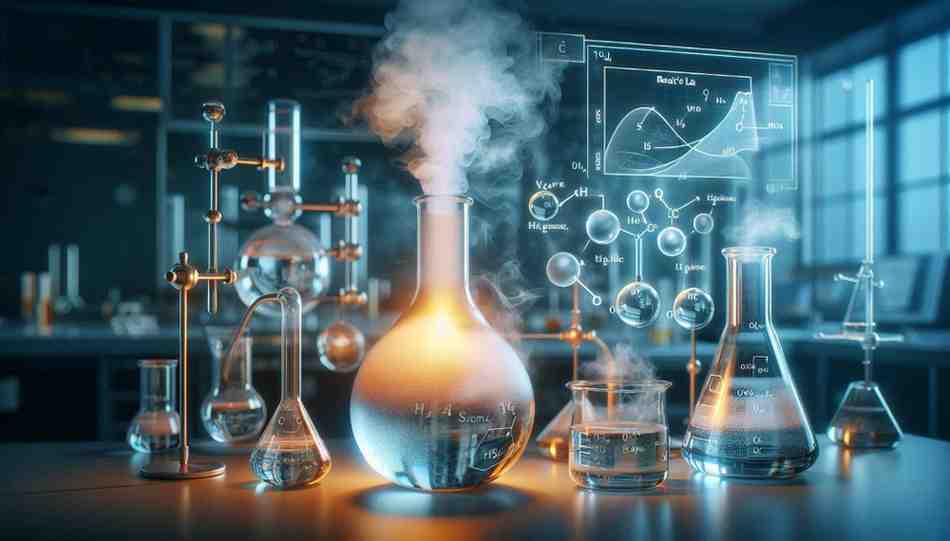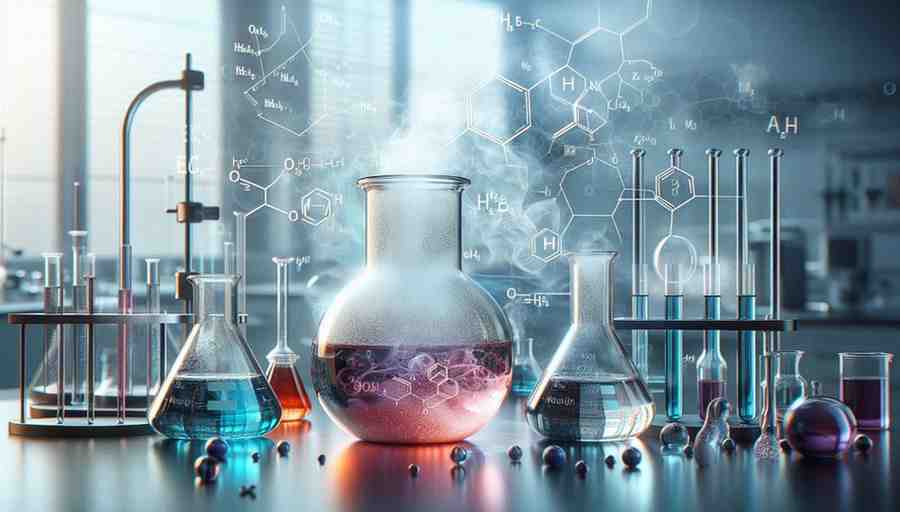Raoult’s Law is a fundamental concept in class 12 chemistry. This law explains the behavior of liquid solutions and their vapor pressures. Understanding This Law is crucial to have a good command on solutions and colligative properties. In this blog, we will discuss its definition, derivation, deviations, and applications with simple explanations and real-life examples. Hence, you all are requested to read till the end.
What is Raoult’s Law? (Definition)
This Law states that the partial vapor pressure of a component in a solution is directly proportional to its mole fraction in the solution.
For a solution containing a volatile solute A and solvent B, Raoult’s Law can be mathematically expressed as:
Where: pA = Partial vapor pressure of component A
p0A = Vapor pressure of pure component A
= Mole fraction of component A in the solution
Similarly, for component B:
The total vapor pressure of the solution is given by:
This law applies best to ideal solutions, where intermolecular forces remain unchanged upon mixing.

Derivation of Raoult’s Law
Step-by-Step Derivation
Consider a binary solution with two volatile liquids, A and B.
Each component exerts a partial vapor pressure, given by:
By Dalton’s Law of Partial Pressures, the total vapor pressure of the solution is:
Rearranging in terms of mole fractions:
Thus, Raoult’s Law explains how the total vapor pressure depends on the composition of the solution.

Deviation from Raoult’s Law
Not all solutions follow this Law perfectly. The deviations occur due to changes in intermolecular forces upon mixing.
Positive Deviation from Raoult’s Law
- Occurs when solute-solvent interactions are weaker than those in pure components.
- The solution has higher vapor pressure than predicted.
- Example: Ethanol and Acetone – Ethanol molecules break hydrogen bonds due to acetone, leading to increased vaporization.
Negative Deviation from Raoult’s Law
- Occurs when solute-solvent interactions are stronger than those in pure components.
- The solution has lower vapor pressure than predicted.
- Example: Chloroform and Acetone – Strong hydrogen bonding reduces the escape of molecules into the vapor phase.
| Types of Deviation | Cause | Example |
| Positive deviation | Weaker solute-solvent interactions | Ethanol + Acetone |
| Negative deviation | Stronger solute-solvent interactions | Chloroform + Acetone |
Applications of Raoult’s Law
Determination of Molar Mass
- Used to calculate molar masses of unknown substances by studying their impact on vapor pressure.
Explanation of Colligative Properties
- Helps understand relative lowering of vapor pressure, boiling point elevation, freezing point depression, and osmotic pressure.
Industrial Applications
- Used in distillation processes like fractional distillation in petroleum industries.
Medicine and Pharmacy
- Essential for designing drug solutions with controlled evaporation and concentration.
Weather and Environment
- Explains humidity and vapor pressure changes in the atmosphere.
Real-Life Examples of Raoult’s Law
- Perfume Evaporation
- When a bottle of perfume is opened, the volatile components evaporate according to this law, contributing to its scent.
- Alcohol-Water Mixtures
- In liquor distillation, ethanol and water exhibit deviation from Raoult’s Law, affecting their boiling points.
- Saline Water Boiling
- Adding salt to water lowers its vapor pressure, requiring a higher temperature for boiling.
Read More:
Ncert Solutions Chemistry12 Chapter 1: Free Pdf Download
Notes of solution for chemistry 12th chapter two
Conclusion
Raoult’s Law plays a crucial role in understanding solutions, vapor pressure, and deviations in real-world applications. It forms the basis for colligative properties and is widely used in chemistry, industry, and environmental science. Understanding Raoult’s Law Class 12 helps in scoring better in exams and applying chemistry concepts in daily life. For more chemistry notes and explanations, explore our blog and keep learning!
Frequently Asked Questions (FAQs)
1. What is Raoult’s Law in simple terms?
Raoult’s Law states that the vapor pressure of a component in a solution is proportional to its mole fraction.
2. What are the limitations of Raoult’s Law?
It applies only to ideal solutions where there is no change in intermolecular forces.
3. What is a real-life example of Raoult’s Law?
Perfume evaporation follows Raoult’s Law, as its volatile components exert vapor pressure based on concentration.
4. Why does adding salt to water increase boiling point?
Salt reduces water’s vapor pressure, requiring more heat to reach boiling.
5. How does Raoult’s Law help in distillation?
It explains how different components evaporate at different rates, making separation possible.
